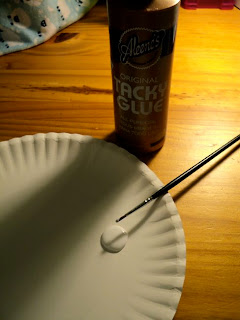There are a few different way to finish the back of an embroidery hoop.
(I do have another way to finish up a hoop HERE)
Mine was a little different because I didn't have it square on a piece of fabric so I couldn't properly seal it off with a piece of fabric with out gluing it to the hoop itself.
What you will need:
your finished work
a hoop frame
needle and thread
extra fabric
craft clue and brush
scissors
Make sure you measure out your finished piece to figure out what size hoop you need.
Mine fit a size 9' wooden hoop.
Stitches by: me
First position your finished piece in the center of the hoop.
Then take the back part of the hoop and trace it on a separate piece of the fabric, cut down to the size of you hoop. It will be smaller and fit in the circle of the hoop. You can use the same fabric or something different, you won't be able to see the back. Especially if you put it up on a wall.
Place the hoop over the piece and tighten on to the back hoop.
(make sure your fabric is taunt and wrinkle free)
Then take a needle with thread and run the thread in and out around the outside of the hoop all the way around.
Then tighten the thread and tie off so your fabric looks it this.
Now the fabric is gathered in the back and will not peek out.
Since my piece was not centered on the fabric I had an area that didn't hang over. So I had to finish it a little differently.
This piece is intended to be hang on a wall so the back side will not be seen at all. So I took the other piece of fabric and laid it right side up under the over hang.
Then I took a small brush and some craft glue and spread the glue out on the fabric and pressed the over hang on to it to secure it in place.
Be sure not to use a lot of glue. you don't want it to bleed on the front finished piece.
After you finish gluing the over hang, the fabric will not be attached to the front piece.
Even though the back side is showing the raw edges, the back of your design will be protected.
Let your glue dry completely then it's ready to hang. :)
I have other piece to fit into hoops so I hope to do another tutorial on a different way to finish the back side.
I hope that this was simple and clear to understand. As I do more tutorials, I feel more comfortable in explaining things. Soon, I can just start whipping these things out :)






















